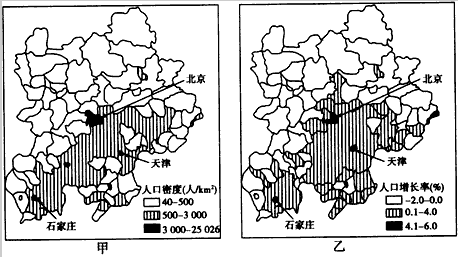问题
选择题
下图甲、乙分别示意京津冀都市圈2000年人口密度分布和人口增长率。完成1—2题。

1、导致该都市圈人口增长空间分布差异的主要原因是 [ ]
A、东部、南部地区经济收入较低
B、西部、北部地区市场潜力较大
C、东部、南部地区非农产业发达
D、西部、北部地区制造业集中
2、应用GIS技术在图甲基础上制作图乙,需要添加的数据是[ ]
A、1999年各行政区的人口数量
B、2000年各行政区的人口数量
C、各行政区的边界
D、各行政区的面积
答案
1、C
2、A
